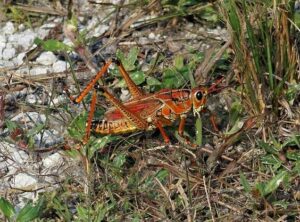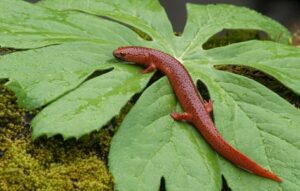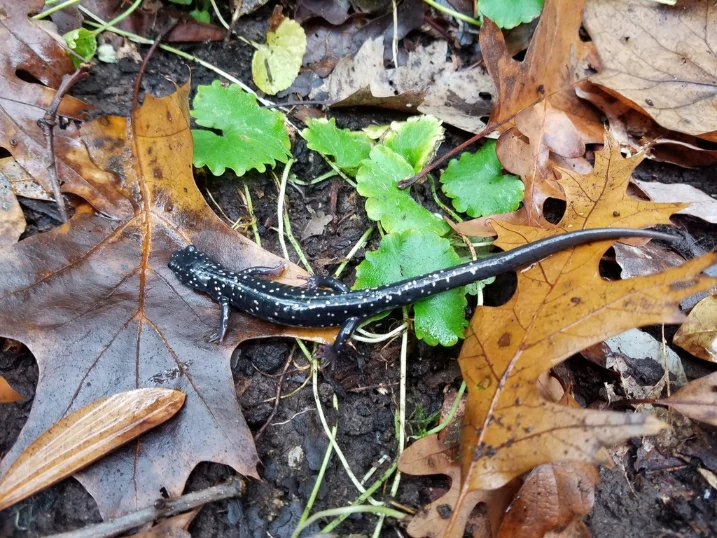Grasshoppers are common insects found in many environments, especially fields, meadows, and grassy areas. Known for their powerful hind legs and remarkable jumping ability, these insects often share the same habitat as salamanders. This natural overlap leads many people to wonder: do salamanders eat grasshoppers?
The short answer is yes. Salamanders do eat grasshoppers, particularly when these insects are young, slow, injured, or otherwise vulnerable. Grasshoppers provide a nutritious and energy-rich food source that many salamander species take advantage of when the opportunity arises.
However, whether a salamander will eat a grasshopper depends on various factors including the salamander’s size, species, hunting skill, and availability of other prey.
Salamanders as Opportunistic Hunters
Salamanders are opportunistic predators, meaning they will eat whatever prey is available, suitable in size, and manageable to capture.
They do not specialize on a single prey type but have a varied diet based on their habitat and what moves within their reach. Grasshoppers, being fast and agile, can be challenging prey, especially the adults.

Yet, younger grasshoppers (called nymphs) are smaller, slower, and less wary, making them easier targets.
Salamanders rely heavily on their senses of movement and smell to detect prey. When a grasshopper is slow, injured, or resting, salamanders are quick to strike.
Many species use a sticky tongue or quick jaw snap to capture prey before it can escape. When grasshoppers are abundant in an area, salamanders will take advantage of the easy meal.
Size and Species Matter
Not all salamanders can handle a full-grown grasshopper. Smaller salamander species, such as many woodland or lungless salamanders, might only be capable of eating young grasshoppers or nymphs.
These nymphs look like tiny versions of adults but cannot yet jump or move as quickly.
Larger salamanders, such as the tiger salamander, are powerful enough to catch and consume adult grasshoppers.
Their larger size and stronger jaws give them an advantage in handling bigger prey. Some aquatic or semi-aquatic salamanders may encounter grasshoppers resting near water edges and can ambush them there.
Nutritional Benefits of Grasshoppers
Grasshoppers are an excellent source of nutrition for salamanders, providing several benefits:
- High protein content: Protein is vital for salamanders’ growth, tissue repair, and overall health. Grasshoppers have a rich supply that fuels energy-demanding processes.
- Good fat levels: The fat in grasshoppers supplies energy and supports healthy cell function.
- Vitamins and minerals: Grasshoppers contain nutrients such as calcium, iron, and vitamins that aid salamanders’ bodily functions.
- Water content: Like many insects, grasshoppers contain moisture, helping salamanders stay hydrated.
Eating grasshoppers occasionally adds diversity to the diet and supports healthy growth and activity in salamanders.
How Salamanders Catch Grasshoppers
Catching a grasshopper is no easy task. Grasshoppers are known for their quick reflexes and jumping ability, often escaping predators by leaping several times their body length.
Salamanders have adapted hunting techniques to improve their chances:
- Stealth and patience: Salamanders often remain still and wait for grasshoppers to come close enough.
- Quick strikes: When the opportunity arises, salamanders launch rapid tongue or jaw attacks.
- Ambush tactics: Some salamanders catch grasshoppers when they are feeding or resting on plants.
- Timing: Salamanders hunt mostly at night or during low light when grasshoppers may be less alert.
Despite the challenge, salamanders’ agility and patience often pay off, allowing them to catch grasshoppers for a nourishing meal.
Do Grasshoppers Harm Salamanders?
Grasshoppers generally do not pose any threat to salamanders. Unlike some insects that have strong defenses, venom, or painful bites, grasshoppers rely mainly on escaping by jumping.

Their strong hind legs help them evade danger rather than harm predators.
Grasshoppers do not bite or sting salamanders, and their legs, though powerful, are not used offensively.
Salamanders face little risk of injury when hunting grasshoppers, which makes them a relatively safe prey option.
Feeding Grasshoppers to Pet Salamanders
If you keep salamanders as pets, you may consider feeding them grasshoppers. In captivity, grasshoppers can be a healthy and nutritious addition to the diet, but some precautions should be observed:
- Source carefully: Only collect grasshoppers from pesticide-free environments to avoid harmful chemicals.
- Size matters: Feed grasshoppers that are appropriately sized for your salamander to prevent choking or injury.
- Mix diet: Grasshoppers should be part of a varied diet, including earthworms, crickets, and other feeder insects.
- Use sparingly: Because of their tough exoskeleton, grasshoppers can be harder to digest, so offer them occasionally rather than as a staple.
Feeding grasshoppers to pet salamanders provides variety and enrichment, stimulating natural hunting behaviors and supporting health.
How Often Should Salamanders Eat Grasshoppers?
The frequency of feeding grasshoppers depends on your salamander’s species, size, and individual preferences.
In the wild, salamanders eat what is available and plentiful, so grasshopper consumption fluctuates with seasons and habitat.
In captivity:
- Young salamanders: Require more frequent feeding (daily or every other day) of smaller prey including grasshopper nymphs.
- Adults: Can be fed grasshoppers 1-2 times per week as part of a mixed diet.
- Larger salamanders: May tolerate larger grasshoppers less frequently due to digestion needs.
Monitoring your salamander’s weight, health, and appetite helps adjust feeding schedules.
Signs of Problems from Eating Grasshoppers
Though grasshoppers are generally safe, some salamanders might experience issues such as:
- Difficulty digesting the tough exoskeleton
- Occasional constipation or digestive blockages if too many are fed
- Loss of appetite if prey is too large or challenging
If you notice any problems, reduce grasshopper feeding and offer softer prey like earthworms or waxworms.
Conclusion
Salamanders do eat grasshoppers, especially smaller or juvenile individuals. Grasshoppers provide good nutrition with high protein, fats, and vitamins, making them a beneficial part of a salamander’s diet.
However, their size, speed, and tougher exoskeleton mean not all salamanders can easily catch or digest them.
In captivity, grasshoppers can be offered as an occasional treat but should be mixed with other softer feeder insects for balanced nutrition and ease of digestion.
Observing your salamander’s response will help you maintain a healthy, varied diet.
Hi, my name is Ezra Mushala, i have been interested animals all my life. I am the main author and editor here at snakeinformer.com.

